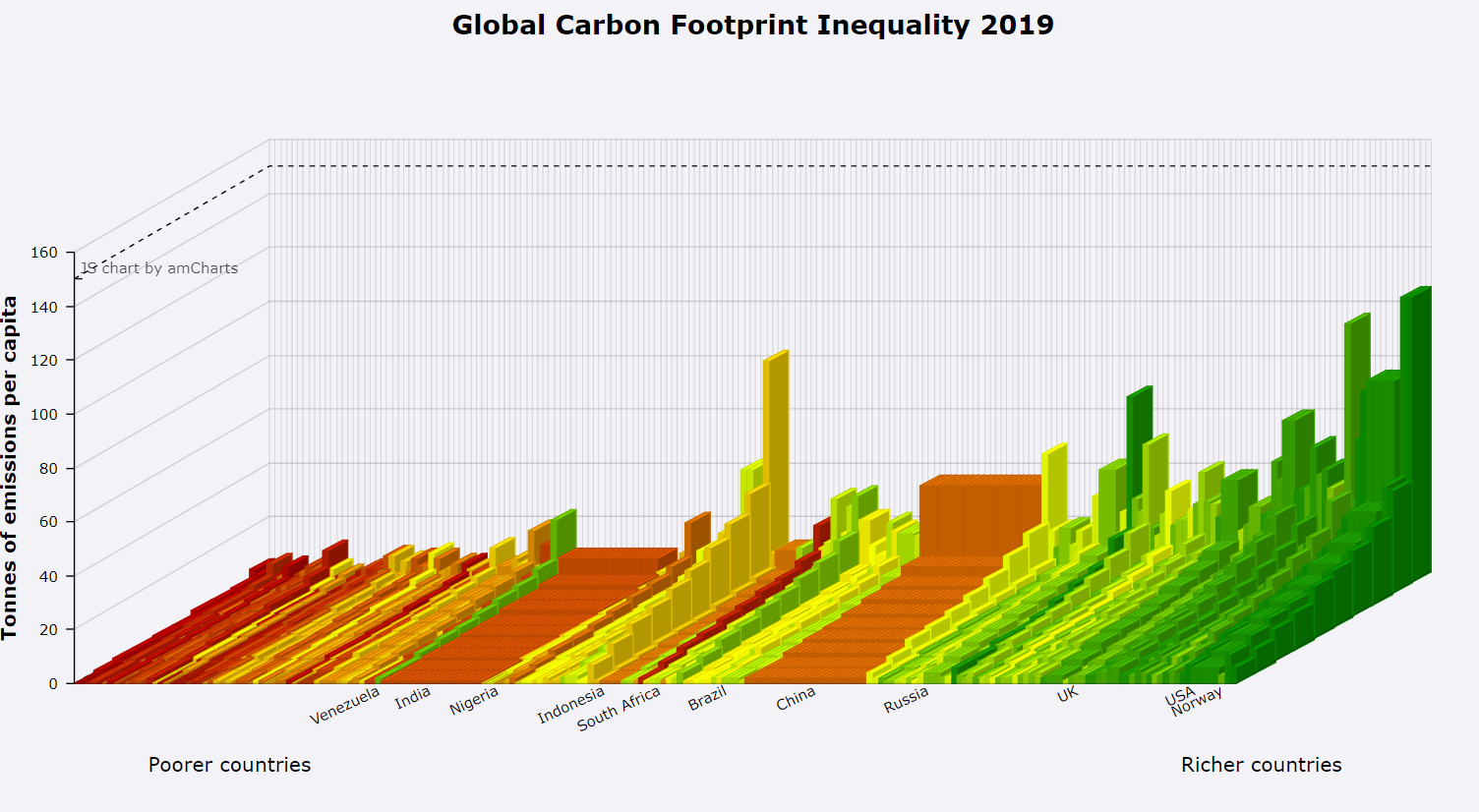About
We build an interactive visualisation exploring global carbon footprint inequality by country and decile for the period 1990-2019. The data is taken from the World Inequality Database (WID).
Click here to go to the graphs
Below you can see the global distribution of carbon footprints across income deciles in 2019. Carbon footprint refers to the tonnes of greenhouse gas emissions per capita in an income decile. Taller blocks correspond to higher carbon footprints. Countries with larger populations are assigned wider blocks. Colours correspond to how rich the country was in 1990, with poorer countries shaded red and richer countries shaded green. Countries are ordered according to national income per capita in each year, while holding colours fixed from the 1990 income per capita ordering. Therefore, with these figures we can see inequality within and across countries over time as well as changes in per capita income. You can click on the picture to explore the graph in greater depth.
These visualisations were created for The CORE Project. CORE is an open-access, interactive ebook-based course for anyone interested in learning about the economy and economics.
You can also explore similar interactive visualisations of global income inequality and global wealth inequality in our companion websites: CORE Skyscraper 1: Exploring global income inequality and CORE Skyscraper 2: Exploring global wealth inequality
Access the data
Below you can access the data that we use to create the skyscrapers. Please note that the population data in our dataset does not include the total population in each country but only the adult population (people aged 20 or more). Such differences in population measurement explain why you might notice some discrepancies between our dataset and other sources. You can also download the data here in xlsx or csv formats.
Contact
Questions? Comments? Concerns? Get in touch with Tzvetan Moev using tz.moev@gmail.com
Acknowledgments
This website is an updated version of Jack Blundell’s Globalinc. We have mostly used his coding for this project, so we owe him a massive thanks. This could not have been possible without his efforts.
For more information on how the data on carbon inequality was collected, please refer to the insightful papers by Prof Lucas Chancel who created the database (Chancel, 2021; Chancel, 2022)
Visualisations created using amCharts.
Bob Sutcliffe designed the use of skyscraper diagrams for representing global inequality. A first version was published in: Sutcliffe, Robert B. 2001. 100 Ways of Seeing an Unequal World. London: Zed Books.

